
We independently review everything we recommend. When you buy through our links, we may earn a commission.
11.6 oz. (328 g) for a US M9 (Unisex sizing)
33 mm in heel, 25 mm in forefoot (8 mm drop)
Long-distance technical adventures and inclement weather
EnergyFoam midsole, Active Chassis, ContaGrip All Purpose outsole, ProFeel Film rock plate
Available now for $250
















TAYLOR: Consider this my unapologetic apology for extended ruminations on running in Chamonix in late summer 2024. Sorry, not sorry. The French Alps are magical in their own right, but they’re especially electric when hundreds of thousands of spectators descend on the valley for a week-long trail-running Super Bowl known as UTMB.
It’s a beautiful thing; runners from all over the world participate. As often as I looked at the flags draped over the shoulders of the finishers, I also looked at their feet. I simply had to know which shoes these world-class athletes were sporting for what had to be their grade-A bucket list effort.
One of the many surprises from my personal data collection was the sheer number of Salomon S/Lab Genesis. It was easily one of the most popular models for any of the long-distance mountain races offered. As if I wasn’t curious about this shoe already, it’s been so popular that the media has not been able to get samples for review.

That’s why when I saw that Salomon created an all-weather edition, I had to get my feet in it before it, too, was out of stock. It’s perfect timing for the Colorado high-country winter we’re having.
The Salomon S/Lab Genesis Spine is the fabled model that takes the standard S/Lab Genesis, a moderately stacked long-distance racer, integrates a water-resistant gaiter, and bolsters the rest. The name itself derives from the conditions it is intended to venture. The iconic Pennine Way is notorious for the nasty conditions that whip along its spine, and the Salomon S/Lab Genesis Spine is built to handle such circumstances.
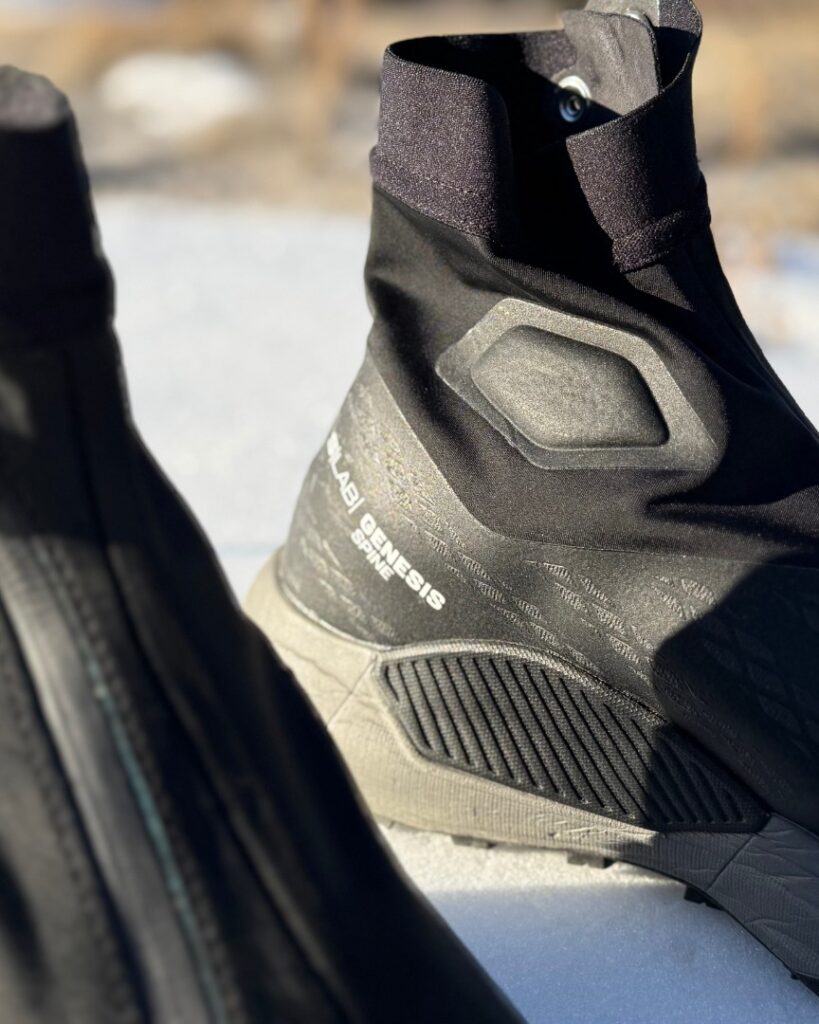
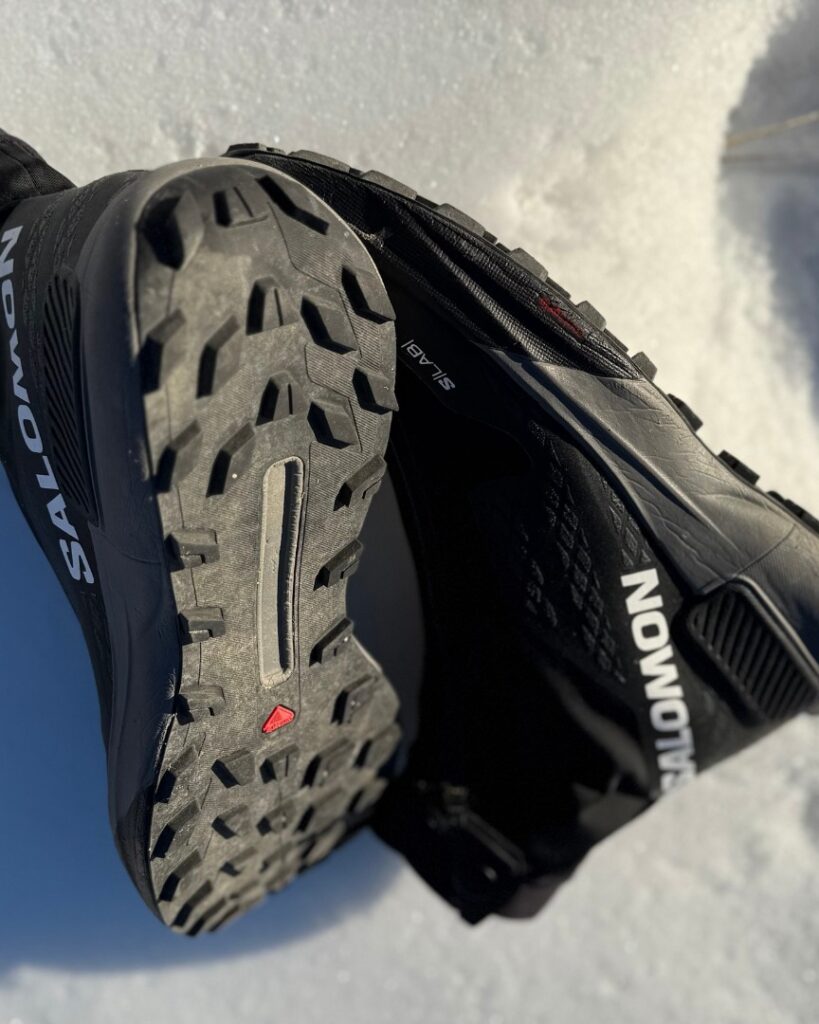
TAYLOR: I gotta say, the S/Lab Genesis Spine pulled a real David Blaine on me. It’s one of those shoes that looks fairly trim from the outside, but it felt quite substantial on foot. I’d have to imagine this is one of the main reasons the shoe is so popular — it feels like a magic trick. The magic, by the way, starts underfoot. Salomon’s EnergyFoam offered a true sense of enough cushion to go the distance, protection via a Profeel Film rock plate, and just enough energy return.
The foam itself reminded me a bit of some of my recent favorites, like Topo Athletic’s MTN Racer 3 and Merrell’s Agility Peak 5, which are good company to keep. I’d say it felt similarly soft to each of those two offerings, yet the S/Lab Genesis Spine does so with a moderate to high stack compared to the lower-stacked options above.
To me, the finished product was a consistent ride that never seemed to fade, which is promising in terms of the longevity of this shoe. I can confidently estimate that this version of EnergyFoam will last longer than that in the standard Salomon Genesis.
Even further down, the footprint of the S/Lab Genesis Spine is slightly wider than a typical Salomon shoe, which adds some inherent stability (especially in the forefoot). Also, the Active Chassis stiffened up particular points within the midfoot and heel to add some more dynamic stability through the rest of the shoe. By the way, the Active Chassis shows up as the rectangular pieces on the outside of the heel and medial arch, if you weren’t quite sure — basically, it’s a posting system. It’s also integrated well enough that I couldn’t really feel a difference underfoot but naturally felt more stable during my miles.
Salomon’s Contagrip All-Purpose outsole compound only further cemented my opinion of the shoe’s stability. Whether conditions were dry or terrible, or if the terrain ranged from smooth to technical, the rubber performed at a very high level. Salomon’s 4.5 mm two-part (multidirectional and multi-shaped) lugs are certainly good enough to gain purchase in most scenarios, whether muddy, slushy, or otherwise nasty.
As for the overall fit, I’d put the S/Lab Genesis Spine somewhere in the same category as the Ultra Glide or the Sense Ride. These shoes would both be considered wide compared to Salomon’s normally thin toebox, but in reality, they’re closer to what I’d call average.

Another piece of that ultra-slim footprint is that Salomon has always offered a fitted heel and midfoot to promote technical performance. As expected, the S/Lab Genesis Spine delivers the same. I don’t think I’d call either element truly slim, but they’re definitely fitted, if that makes sense. Salomon’s fabled Quicklace system surely helps in this scenario, though I have to show some love to the booty-like design that adds further structure around the entire foot.
I should also take a minute to point out what makes the S/Lab Genesis Spine different from the original shoe — and it’s not just that this one has a backbone. Honestly, the only real difference is that Salomon has swapped the upper. It ditched the durable, lightweight, technical Matryx upper and grabbed a fully integrated, water-resistant gaiter instead.
I’m sure you expected me to say more about the upper, but I think of it like hiring a handyman (or a hitman). It showed up, did its job to the extent expected, and then went home for the day. There’s no more to say about it, really. Did it keep out debris? Surely. Was it comfortable? No rubbing or weird folds here. Did it shed moisture? Well, yes, at least for mud, snow, and some frozen puddles… to an extent.
Shop The Shoe - Unisex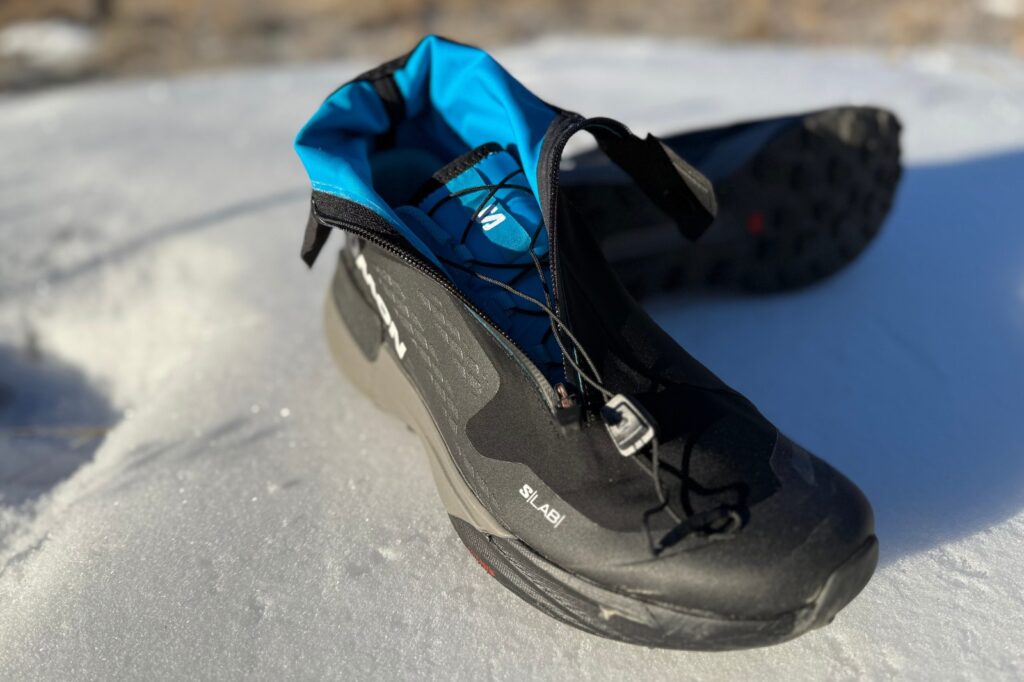
TAYLOR: Quick — tell me the number one thing you think of when you add water-resistant protection to any piece of equipment.
Staying dry, of course.
Alright, but what’s the number two thing you think of? Hopefully you said weight, because that’s the answer I was looking for.
When you add waterproofing, you’re always going to add a bit of weight. Based on the spec sheets, the difference between the S/Lab Genesis Spine and the original is about two and a half ounces (about 80 g). It’ll feel substantial if you’re used to racing in the original, but you might not notice as much if this is your genesis to, well, Genesis. My US M10.5 came in at 12.2 oz, which is heavy but still about 0.7 oz lighter than the La Sportiva Cyklon Cross GTX.
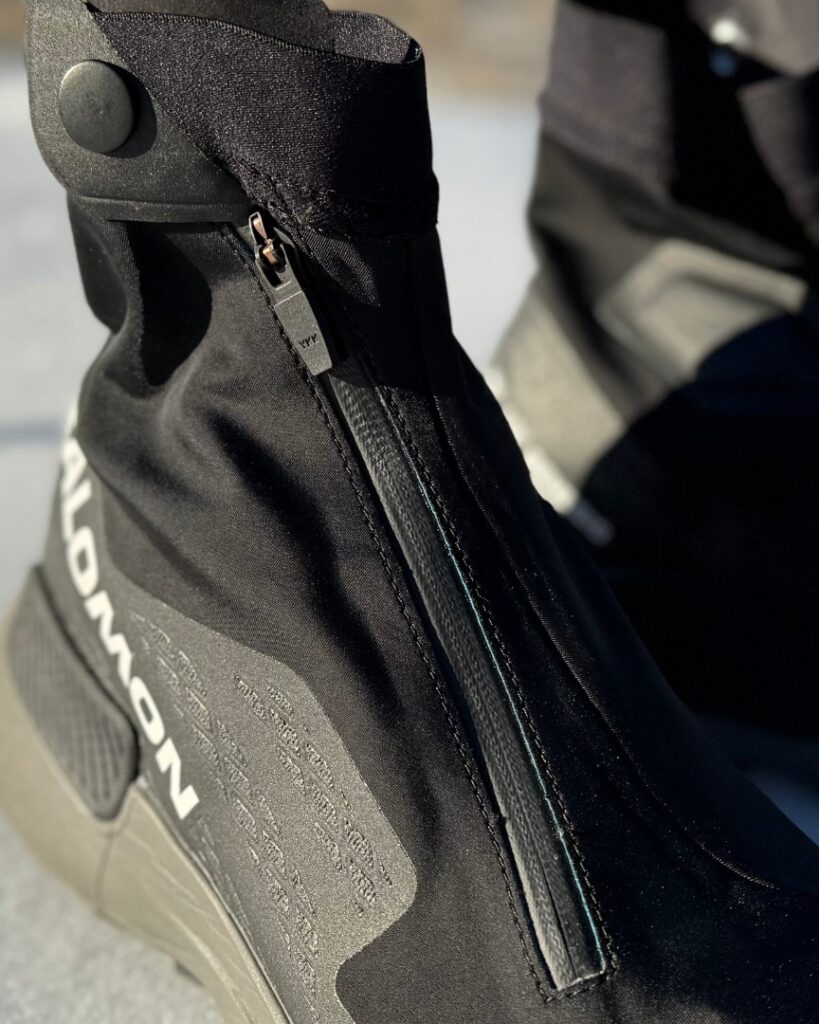
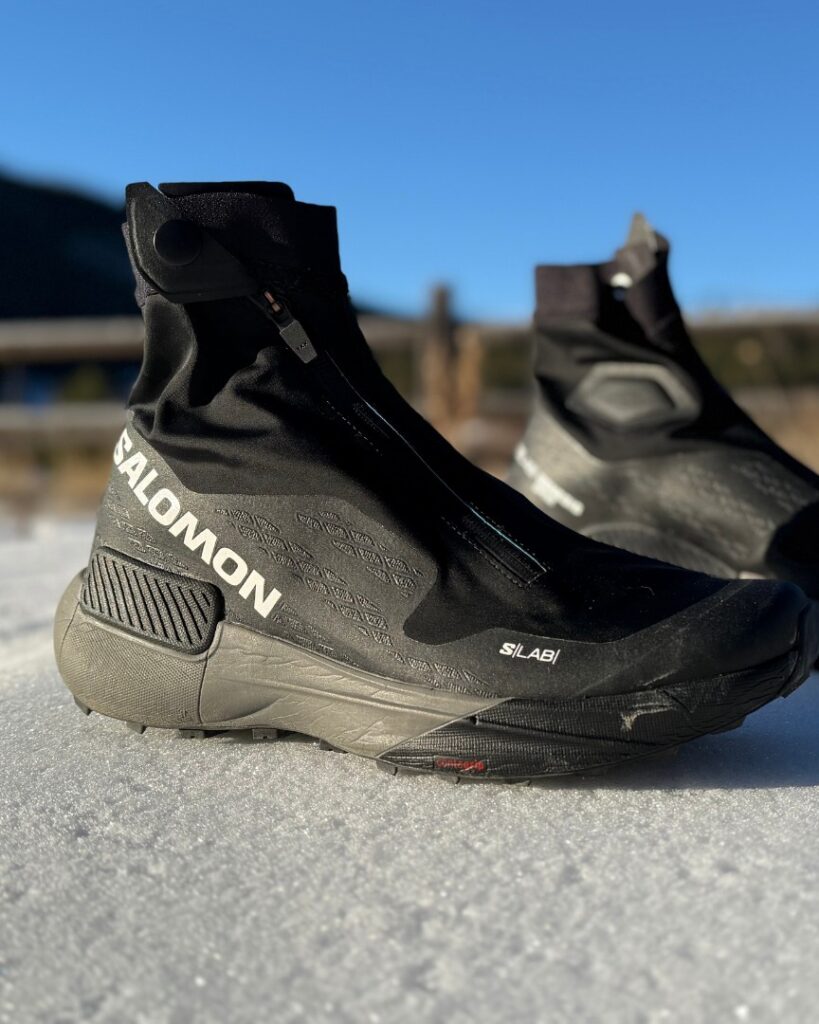
I’ll also admit that the water-resistant tag concerns me. To be fair, I haven’t found the extent of its protection while on the run, but that meant I had to experiment a little bit more at home. So, I hopped in the shower. On one foot, I wore this shoe, complete with its water-resistant billing. On the other, I sported a shoe with proper Gore-Text protection, and there was certainly a difference. After only about a minute, the S/Lab Genesis Spine started taking on water right where the upper met the toe bumper and overlays.
Again, I didn’t experience this type of flooding on the run, but I’ve mostly been pushing through snowy, cold conditions. I did traipse through mud and frozen puddles but rarely went so deep as to fully submerge my foot. I’d hate to be out in the elements for hours on end just to wind up with frozen toes or soaked feet in an already heavy shoe, so take caution. This was my concern with The North Face Offtrail TR as well, and now I must ask: if you’re going to price a shoe this high and offer this much tech, why not spring for proper Gore-Tex, too?
Shop The Shoe - Unisex
TAYLOR: I find myself both impressed and disappointed after reviewing the Salomon S/Lab Genesis Spine. I’m afraid that the glory of the shoe comes almost exclusively from what it was built on. The underfoot comfort, protection, and technical ability of this shoe are phenomenal — no wonder why the standard Salomon S/Lab Genesis is practically sold out everywhere.
Yet that experience can only take the shoe so far in inclement weather. Adding the gaiter should, and does, allow runners to take that high-end performance into snowy, muddy, and marginally wet conditions. Debris won’t be an issue, but water is another story.
I imagined myself spending all day outside in the wintery bliss, fording rivers, and tagging peaks without care in the Salomon S/Lab Genesis Spine — and for performance reasons, I still might.
It turns out that I’ll have to make a calculated decision before I reach for the S/Lab Genesis Spine, though. Water-resistant will completely eliminate this one from the feet of some runners. If it is too saturated, your foot will absolutely feel the moisture. Again, it handles water in doses but not in douses.
Of course, you’ll have to balance the scales for your own personal conditions. Maybe the confidence of a built-in gaiter is all you need, or maybe you’ll need something with even more protection to it.
You can pick up the Salomon S/Lab Genesis Spine for $250 from Running Warehouse (featuring free shipping and 90-day returns) by using the buttons below.
Shop The Shoe - UnisexHave something to say? Leave a Comment

Taylor Bodin is a trail and ultra runner living in Estes Park, Colo., with his wife and daughters. As the head of the Dirt Division at Believe in the Run, trail running is pretty much the only hobby he can manage right now and loves it. Every so often, he will pop off a race or FKT attempt because competition is pure and the original motivator for him getting into running anyway.
More from Taylor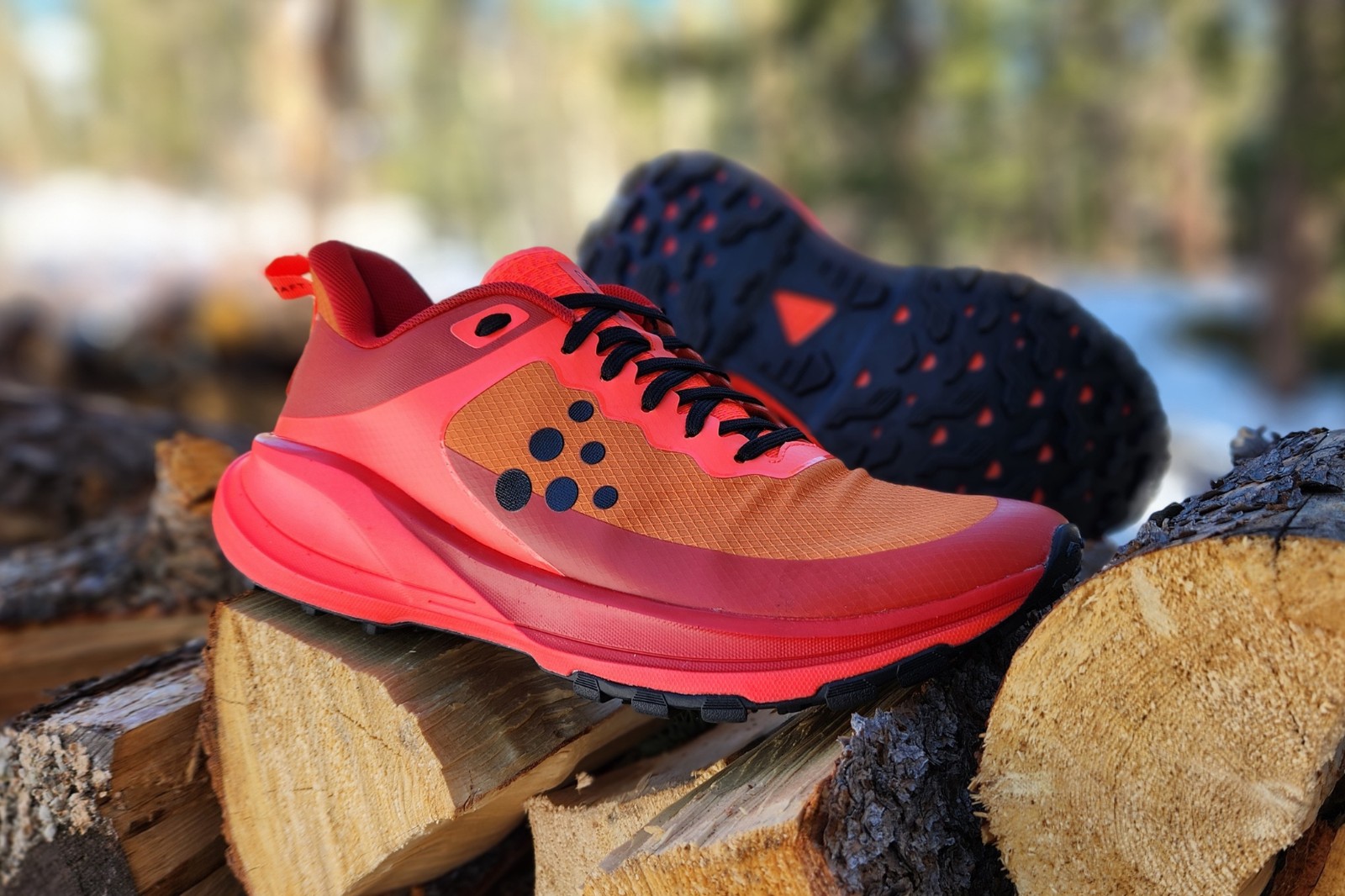
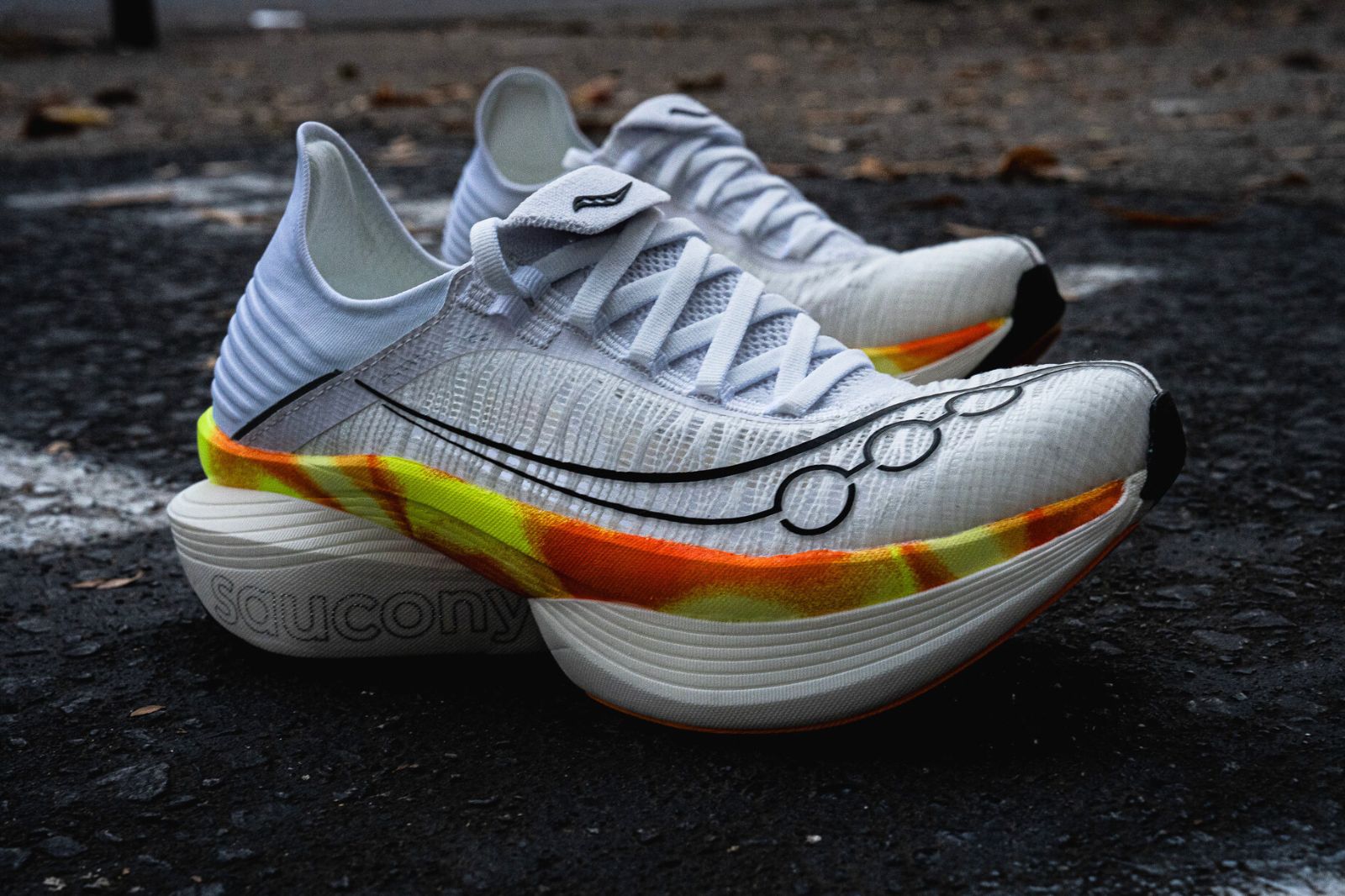
Do you think the upper would keep out fine sand? Say, on a sand dunes hike/run?
Am I missing something? Gore-Tex is by no means waterproof. It’s described as water resistant even on the Gore website. It’s very expensive to license and offers no protection against the situations you describe here.
Furthermore, it’s a one way membrane. It can breathe OR repel. Not both at the same time. Meaning if water does get inside it stays inside.